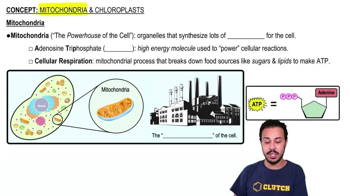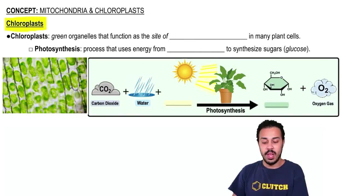Textbook Question
Which of the following cell structures would you expect to be most important in the growth of bacteria on the surface of your teeth?a. cell wallb. fimbriaec. flagellad. cilia
1401
views
 Verified step by step guidance
Verified step by step guidance Verified video answer for a similar problem:
Verified video answer for a similar problem:



 5:54m
5:54mMaster Prokaryotic & Eukaryotic Cells with a bite sized video explanation from Bruce Bryan
Start learning